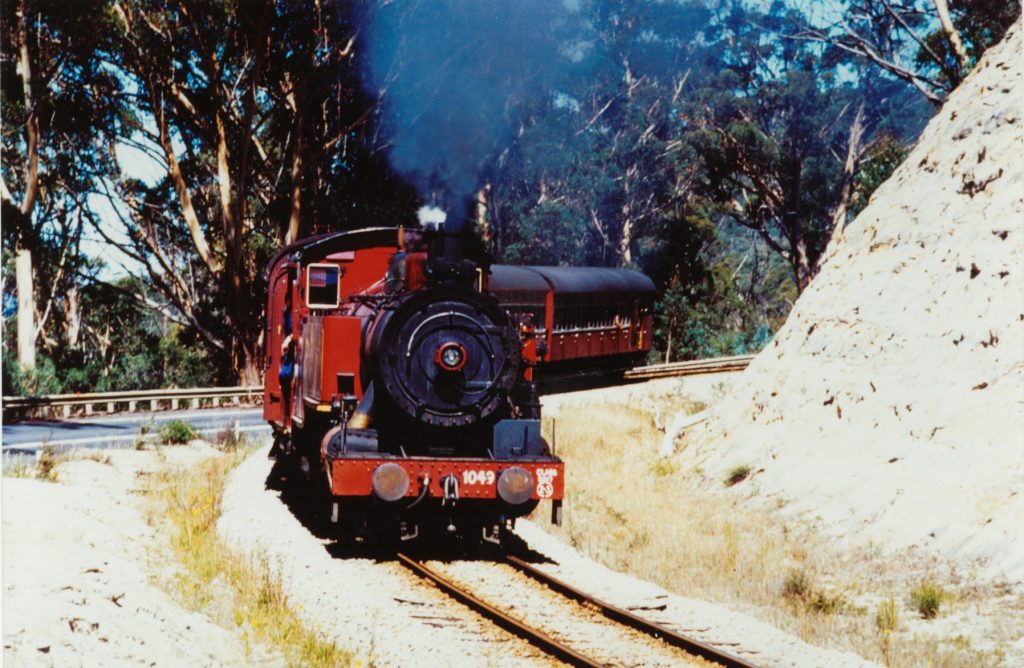The rail line from Sydney to Bathurst reached Lithgow in 1869 and saw the focus of development shift from the road centred town of Bowenfels, toward Lithgow.
The requirements of the New South Wales Railways for supplies of good steaming coal, of which Lithgow had in abundance, and steel for the construction and maintenance of the rail network provided the catalyst for the industrialisation of Lithgow.
Lithgow was to develop as the rail-head for the western region. Two stations were built in Lithgow to service the development of the coalmines, blast furnaces and other industries. EskBank Station was positioned at one end of Main Street and Lithgow Station at the other. The line was then taken to Bowenfels and extended to Wallerawang and Rydal in 1870, eventually reaching Bathurst in1876. A further branch was also taken out toward Mudgee, with the first section to Capertee being completed in 1882.
A number of sidings were built off these main lines to provide access for the major collieries including the Wallerawang Colliery branch line, opened in 1924, the Cal Colliery siding and Vale of Clwydd Company siding both developed in 1927 and abandoned in 1931.
A critical factor in the construction of the line to Bathurst was the descent to the Lithgow Valley. It was eventually decided that a ‘Zig-Zag’ line would be constructed which would progress trains down the escarpment by a forward and backward (zig-zag) movement by specifically arranged grades and bridges.

One of the major limitations of the zig-zag system was that because the rail continually changed direction, the length of trains to use the line was limited. This limitation was to have long term implications in terms of the cost and viability of transporting goods from Lithgow and the surrounding district to coastal markets.
As demand for rail transport increased and the engines grew larger, the Zig-Zag became inadequate. This led, in 1910, to the construction of ten tunnels to allow movement of trains from Mount Victoria to the valley below. An additional station between the Lithgow and Esk Bank Stations was also constructed to provide greater convenience for the train passengers. The former Zig-Zag Railway currently operates as a tourist attraction in Lithgow.
In 1951 the western rail line was to be electrified to Wallerawang ahead of both Wollongong and Newcastle line electrification. Proposals by the NSW Railways associated with the electrification of the line were to provide a significant impetus, particularly for the development of Wallerawang. New town plans were drawn up for Wallerawang. This was to include large railway workshops and a power station to supply the railways. The power station was to be supported by the Newcom Colliery.
Political decisions ensured that the main electrified line did not go further than Lithgow. The railway workshops were, as a result, built at Lithgow and the plans for the town of Wallerawang were never brought to fruition.
Further, the decision in 1968 by the government to move the diesel workshops to Bathurst reduced the workshop operations in Lithgow.To compensate for this, the railway goods yards were increased at Lithgow at the expense of the yards at Wallerawang.
The City of Greater Lithgow acknowledges and appreciates the History excerpts taken from the Draft Economic Development Strategy for Lithgow which was researched and compiled by Economic and Community Development Class, University of Sydney October 1996



